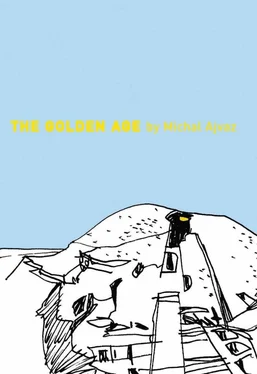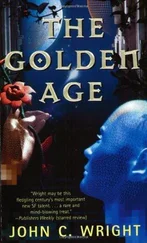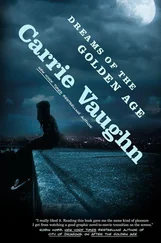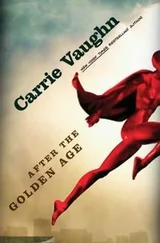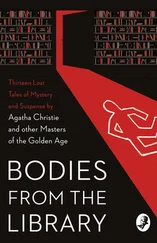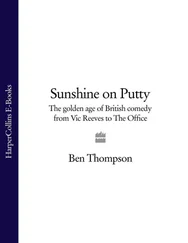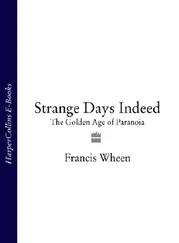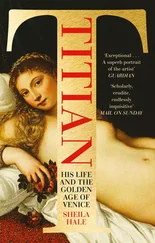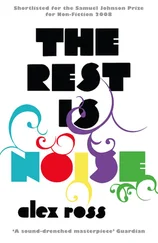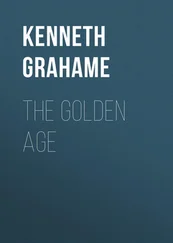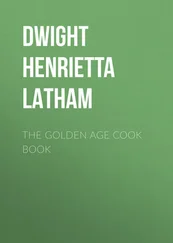Michal Ajvaz - The Golden Age
Здесь есть возможность читать онлайн «Michal Ajvaz - The Golden Age» весь текст электронной книги совершенно бесплатно (целиком полную версию без сокращений). В некоторых случаях можно слушать аудио, скачать через торрент в формате fb2 и присутствует краткое содержание. Год выпуска: 2010, Издательство: Dalkey Archive Press, Жанр: Современная проза, на английском языке. Описание произведения, (предисловие) а так же отзывы посетителей доступны на портале библиотеки ЛибКат.
- Название:The Golden Age
- Автор:
- Издательство:Dalkey Archive Press
- Жанр:
- Год:2010
- ISBN:нет данных
- Рейтинг книги:4 / 5. Голосов: 1
-
Избранное:Добавить в избранное
- Отзывы:
-
Ваша оценка:
- 80
- 1
- 2
- 3
- 4
- 5
The Golden Age: краткое содержание, описание и аннотация
Предлагаем к чтению аннотацию, описание, краткое содержание или предисловие (зависит от того, что написал сам автор книги «The Golden Age»). Если вы не нашли необходимую информацию о книге — напишите в комментариях, мы постараемся отыскать её.
is Michal Ajvaz’s greatest and most ambitious work.
The Golden Age
The Golden Age — читать онлайн бесплатно полную книгу (весь текст) целиком
Ниже представлен текст книги, разбитый по страницам. Система сохранения места последней прочитанной страницы, позволяет с удобством читать онлайн бесплатно книгу «The Golden Age», без необходимости каждый раз заново искать на чём Вы остановились. Поставьте закладку, и сможете в любой момент перейти на страницу, на которой закончили чтение.
Интервал:
Закладка:
A popular genre was the so-called “lost portrait.” Having commissioned a master weaver to produce his likeness, the client would some time later receive a carpet that showed, for example, a large town in which there were thousands of figures in the streets and at the windows. One of these figures was a portrait of the client, but in order to find it, it was necessary to look very hard. The longer this search took — and it might take months or even years — the more highly the work was prized. The carpet weavers employed a number of tricks: after several years of intensive searching, one client found his own face reflected dimly on the lid of somebody’s snuff-box, while another found himself painted on a crumpled chocolate-bar wrapper lying on a rubbish heap. A carpet which made use of Poe’s principle of the “Lost Letter” was particularly celebrated. This depicted a painter showing his girlfriend a picture mounted on his easel, that of a town. The town was extraordinarily elaborate and there was a fantastic number of figures in the streets and parks and on the squares and bridges. The client studied the picture for many years, taking in every figure and every nook and cranny, until one morning he found his portrait in the large face of the painter in the foreground.
Yet the carpets fascinated most by their marvellous daily metamorphoses. The fibres retained all characteristics of the spider’s web: all night and for most of the day they were snow-white in colour, but when the first dim rays of sun heralded the dawn they gave off their acute scent and then wonderful pictures began to paint themselves across the white surfaces. The first marks to appear on the white fabric were red and white, but they were followed slowly by the rest of the colours. Each picture would shine for an hour or so, after which time the colours would begin gradually to fade, until the carpet returned to white and remained thus until the next morning. Poetically, the natives called such works “dreaming carpets”: they imagined that for a short time at dawn the carpets had colourful dreams before falling back into the heavy, dreamless sleep of objects.
Gato was enchanted by the carpets. Because of them not only did he remain in this strange land for a whole year but he undertook to learn the subtleties of the carpet-maker’s art in one of its most celebrated binder’s workshops. When he sails away he takes his journeyman’s work with him — its picture that of a castle perched atop a rock which rises out of a lake. The castle has many towers and turrets, one growing out of another and all joined to little arched bridges. (On one of these bridges Gato has depicted himself as a figure standing by a balustrade contemplating the bizarre shapes of the clouds in the distance.)
Gato sails off to Devel in disguise, over his shoulder a rolled-up carpet whose white fabric conceals the picture of his dreamlike castle, in his travel bag a collapsible weaver’s loom and a ball of spider-spun fibre. As in the half-light of evening the ship pulls in to port at Devel, Gato is standing at the prow, leaning on the rail, looking at the grey, hostile town with its steep, winding streets that reach from the harbour to the walls of the gardens of the royal palace. All but one of these streets turns back the way it has come; this street has succeeded in extricating itself from the tangled knot, reaching beyond the last houses of the town right to the gates of the great gloomy palace. Having passed the night on the jetty, Gato sets off for the palace before sunrise. The day begins early at the palace, and Gato is immediately admitted to the presence of a chamberlain; there he rolls out the carpet moments before the red flags on the turrets of the castle and the masts of the boats on the lake become visible together with the great red flowers and emerald-green leaves of the trees on the bank.
The chamberlain watches with delight as the magical castle emerges; before the last of the coloured marks has appeared he rushes to show this wonder to the king. The king has Gato brought to him and immediately buys the carpet. By the time the castle and the lake begin to dissolve an hour later, Gato has been appointed court carpet-binder and a servant in livery has led him along a long passage to his chamber, where he is to work on his first commission. Taal wishes him to weave for his daughter Hios a carpet that will show a garden of paradise with fountains, artificial waterfalls, alleys, summerhouses, gaily-coloured birds and winsome beasts. Once Gato is alone in the large, well-lit room he steps to the window. He sees below him the tops of the trees of the palace gardens, and further below still, the grey pitched roofs of the houses in the streets that slope down to the harbour, and beyond these the light strip of the sea.
The peregrinations of the caliph
The next part of the Book described Gato’s stay at Taal’s palace. It is not difficult for Gato to discover the whereabouts of the gemstone: everyone at the palace knows that it is in among the other jewels in the royal treasury, which is in the corridor leading to the main hall. To Gato’s surprise there is no guard at the door to the treasury; he is surprised also by the fact that there is a metal panel mounted on the door, into which has been carved a complicated, square-shaped labyrinth composed of passages represented schematically that intersect at right angles and lead into an empty central space. There is only one entrance to the labyrinth, and in this there is a game stone, which appears to be a piece of a magnet. It seems that this game stone is waiting for someone’s hand to take it and push it along the intricate passages.
Gato wonders if there is some connection between the route taken by the labyrinth and entry to the treasury. He puts his hand on the game stone and is about to move it when a cry of horror rings out behind him. He turns to see a lady courtier running towards him down the empty corridor. She leads him away from the treasury and proceeds to tell him about it. The prince learns that everyone has the right to attempt to open the door, and whoever succeeds may take whatever he wishes from the treasury. The door is said to open when the game stone reaches the centre of the labyrinth on its thirty-sixth move, although so far no one has succeeded in making this happen. One false move and a trap-door opens in the floor, sending whoever is standing in front of the door tumbling into a chasm in the rock on which the palace stands, into the icy waters of the subterranean river that flows down below. Since the death of Prince Fo, only Taal, Uddo and Hios know the right moves.
Though he cannot rid himself of the image of his solidified mother, Gato is afraid to ruin things by his impatience. He makes a drawing of the labyrinth in his attempt to work out which thirty-six moves to take in order to reach the centre. He has plenty of time for this; although it is his task to weave a garden of paradise and he receives frequent visits from Taal in supervision of his progress, it is only possible for him to work in the early morning, when the spider’s fibres display their colours. This means he can devote the rest of his time to the labyrinth. He rarely leaves his chamber, but this suffices for him to notice that all the corridors on one side of the palace end in locked doors. When he comes across the lady courtier who explained to him the secret of the treasury and asks her what is beyond these doors, she pulls him towards her and whispers, “The castle of the spirits. Dusty Fo-land. The palace of the dead prince.”
Princess Hios, too, develops the habit of going to Gato’s chamber each morning, so that she can see how the work is progressing. There is another curious thing about a dreaming carpet: so fine is the material used that it allows detailed work on the tiniest parts, and this means that parts are in constant rebellion against the whole. Motifs are conceived — which often go unperceived by all but the most observant eye — that not only have no connection with the whole but may even serve to subvert it in some amusing or eccentric way. The coloured fibres encourage playfulness and small-scale subordination. The irony alive in the carpets and so much connected with their weaving has settled in Gato’s fingers to such a degree that his hands compose the fibres of the garden-carpet in scenes unexpectedly grotesque, his sadness, restlessness and anxiety notwithstanding.
Читать дальшеИнтервал:
Закладка:
Похожие книги на «The Golden Age»
Представляем Вашему вниманию похожие книги на «The Golden Age» списком для выбора. Мы отобрали схожую по названию и смыслу литературу в надежде предоставить читателям больше вариантов отыскать новые, интересные, ещё непрочитанные произведения.
Обсуждение, отзывы о книге «The Golden Age» и просто собственные мнения читателей. Оставьте ваши комментарии, напишите, что Вы думаете о произведении, его смысле или главных героях. Укажите что конкретно понравилось, а что нет, и почему Вы так считаете.
